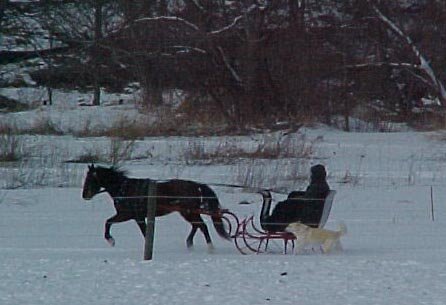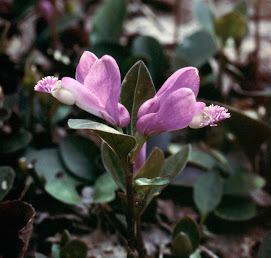I cannot remember when I wasn’t interested in birds, my parents were not the least bit interested. When I was about 12 my father would drive my sister and I to the beaches just to enjoy the ride. I remember him telling us that Terns were baby Seagulls. I didn’t have any thing to go by but I knew that terns didn’t come from Gulls, “Give me a break”. I got my first bird book on Christmas 1947. I remember I was really thrilled with that book. However it was sure a let down when you tried to use it. The name of the book was the Illustrated Encyclopedia of American Birds by Leon Augustus Hausman P.H.D. This book even for the time was not for anyone starting birding. It had 540 pages of the poorest black & yellowish pictures all hand drawn. If you didn’t know what the bird already was you sure didn’t know after you looked for it in that book.
Everyone knows what a Red Wing Blackbird looks like “ Right” I thought for sure there was no doubt in my mind. However this book had all sixteen sub species all with 16 black and white Drawings all looks the same I probably could have picked out a more exotic Name for the Red wings I saw like the Rio Grande Redwing or one of the other 16.
One funny part I kind of liked was there description of a black bird. It goes like this….the bill is always stout, and sharp, sometimes short or long, but never longer then the head, the tail is not longer than the wing And is usually rounded or squareish at its tip not forked and has 12 feathers In general the bird is black or blackish which ever is prominent the voice is usually rich and full or harsh and guttural. What other description could you ever need?
We have come a long way with field guides for birds, especially, you
should have one real good guide if you do any birding at all. Two is better I Find sometimes you get a better feeling if 2 books compare exactly then you’re sure its right.. I have 5 bird guides all the best ones any way but I found you never need that many. I keep about 15 other guides Trees, Wild flowers Butterflies, Moths, etc. I find the Stokes Nature Guides as The best books for any advanced reading on Bird behavior, wild flowers, Insect lives, animal tracks, etc. The guide to Winter is what I am reading now. I read it once a year.
Now that I have difficulty getting out I built a feeder on the end of our deck
The end of our deck just about reaches our kitchen window now I have 4 Feeders all together about 8 ft I covered them with hemlock and spruce Boughs The birds seem to enjoy it I have one squirrel proof feeder. The only one that works, I have a covered feeder on top of a 8 ft pole about 2 feet beneath the feeder is a (Beer Ball). Finally have the squirrels stumped. They just can’t get around that slippery ball. I Always make sure they have one store bought feeder a year to destroy for about$ 15 a year it keeps them busy and they think they outsmarted me another year.
My feeder this year is a success the only problem I had was if it rained or we had snow the birds had to use the covered feeders. I solved that by putting an old umbrella in the middle. They thought they were in Florida for sure.. They kind of liked it the titmouse would go up inside the top of the umbrella and hop around the cross pieces. When they went down to get seed they slid down the metal center pole like a fireman. About 2 weeks ago our feeders reached there high point so far this winter... day and time we had 23 Juncos and about 50 Goldfinch 4 titmouse 6 Chickadees 15 \Tree Sparrows the usual Hairy & Downy Woodpeckers a Red Bellied Woodpecker has been coming to the feeder daily for several months.
On the north side of the house facing the road there is a horse ranch of sorts.
About 500 ft past the horse ranch is the Susquehanna. River we have a 10 ft picture window facing the river I have my scope set up in the window permanently
A Red tail Hawks frequent the trees along there as does the occasional Bald Eagle. The hawks on occasion will stop over for a Dove.
Changing the subject, a little was asked about the Christmas count Yes they are still doing that. This is the 108 th year of the count, Binghamton N.Y. was
the nearest to our area about 25 miles they counted 68 species. The long Island
area was counted by NassauCounty Bird club 57 counters 241hours tallied 113
species. The total Christmas count was 28,826,444 which was lower than usual.
The sad part is in the past 40 years of Bird counts including Bird breeding counts
In the U.S. most of the more common birds song birds and a lot of northern birds have lost 68 to 80 % of there numbers it is hard to recover as situations for them is deteriating.
One example (due in part by global warming) is that the permafrost and ground temperatures melt or the effect it has on the earth itself is moving the food source further and further north if birds and other creatures tied to living on what was once there even 10 or 15 years ago. Migrate north to less and less. That includes most shore birds of which there are millions food will soon have the same affect. Try to imagine what the figure 80% means thinking about they are only birds after all putting that figure in human terms the population of U.S right now is
301,147,000 say we had a major nuclear war at least 1000 bombs that would kill.
80% about 240,000.000 more or less that would kill every person in the U.S.except the state of California 36,400,000 and Texas 24,000,000
The rest of the country would be 100 % gone. So that is what is gone in the
Bird world if there was a bird keeping track. Even at that we would have a better chance at a come back then they will.
Bird of the month (Junco Slate Colored) One of the easy birds to identify
Mostly slate colored grey white bottom an white outer tail feathers. Actually Juncos are sparrows in winter they travel with other small birds such as Chipping Sparrows, Tree Sparrows Pine Warblers and others if you come upon a flock of mixed birds they will all fly up the top of a tree at once and scold you.
Juncos were until 1830 called snowbirds. A group of scientists didn’t think the
Bird was in the right class by the time they finished with it they changed it to
Latin name Junco meaning a seed. Generations called it Snow Bird and were
Not two thrilled with the change Juncos are true cold weather birds they
Nest as far south as the mountains of Pa. and high elevations of N.Y.
Bird of the month (Tree sparrow) this sparrow is easy to identify it is a clear
Breasted Sparrow except that give away spot in the center of the breast the rest of him has the usual brown back with light wing bars and rusty top hat.
One of the hardiest sparrows they winter in Northern N...Y. and southern
Canada. I have seen them nearly every place in winter on Long Island and]
The Adirondacks I have had them at my feeder the past month. They are on
A decline the northeast.
P.S. the next nature news # 2
How the birds keep there wood stoves going when it’s so cold and plants too;
Bill Reeves
1/27/08
Along the Susquehanna

View from our front window
Sunday, January 27, 2008
Subscribe to:
Post Comments (Atom)








4 comments:
Well brother you just keep amazing me on your hidden talents,very well written with your added sence of humor too. Very refreshing with all of the sadness in the world and books written to make it worse,its nice to dream into what nature is about and you have made this possible.
George said you should write for a magazine because you are good,he enjoys everything.
bet you never even read my comments
Yes we do.
Post a Comment